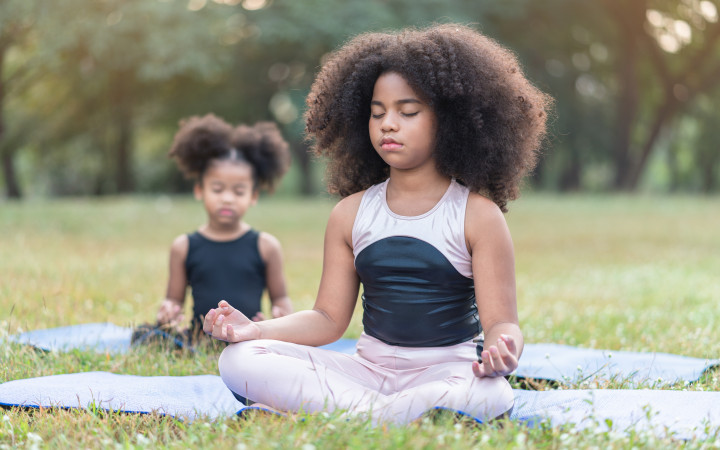Today’s Wonder of the Day was inspired by Noelle. Noelle Wonders, “why is meditation helpful for people and kids” Thanks for WONDERing with us, Noelle!
How do you care for your mental health? Many people find that spending time with friends goes a long way. Others know that yoga and exercise are good for both the body and the mind. Today’s Wonder of the Day is all about another practice that can be good for mental health—meditation!
Meditation has been around for many years. In fact, ancient people may have meditated as early as 5,000 B.C.E. The oldest evidence of the practice comes from Egypt and China. However, meditation has been a big part of some religions for centuries. These include Buddhism, Hinduism, Judaism, Jainism, and Sikhism.
So, what exactly is meditation? When you hear the word, you might imagine a monk sitting alone in a quiet place. Perhaps his legs are crossed and he hums a steady “Ohm.” Well, you’re not far off!
Many forms of meditation exist today. However, they tend to have a few things in common. First, it’s best to meditate in a quiet space. It’s also important to take a comfortable position—whether that’s sitting, lying down, or standing. Finally, meditation involves an open attitude and focused attention.
Meditation may be an ancient practice, but it wasn’t studied scientifically until the 20th century. Experts confirmed what many people have known for generations: Meditation is good for the mind, body, and spirit.
What are the benefits of meditation? For many people, it lowers stress and anxiety. It’s also known to improve the quality of sleep. Studies have also shown that meditation can increase attention and memory. It can also lead to deeper self-knowledge and stronger willpower.
Of course, the benefits of meditation aren’t restricted to the mind. It can also lower blood pressure. People who experience chronic pain may also find relief through meditation. Perhaps most interesting, meditation can help reduce the effects of aging on the brain.
Are you interested in learning to meditate? If so, a great place to start is with paying attention to your breath. Close your eyes and think about how you breathe naturally. Do you take deep or shallow breaths? How many seconds do you spend inhaling? How about exhaling?
Next, you might practice some patterned breathing. This can include many combinations of inhaling, holding your breath, and exhaling. As you breathe, pay attention to how your body feels. Where in your body can you feel sensations as you breathe? What parts feel tense, and which are relaxed?
Meditation can also include guided imagery. In this practice, another person guides your imagination as you picture a story or scene. If this sounds like something you’d enjoy, ask a trusted adult to help you practice this skill.
Have you ever meditated? How did you feel afterward? Many people report feeling calm and relaxed following meditation. It’s no WONDER people have practiced meditation for centuries!
Standards: CCRA.R.4, CCRA.L.3, CCRA.L.6, CCRA.R.1, CCRA.R.10, CCRA.SL.3, CCRA.L.1, CCRA.L.W.1, CCRA.SL.1, CCRA.L.2, CCRA.R.2, CCRA.SL.1, CCRA.L.1




